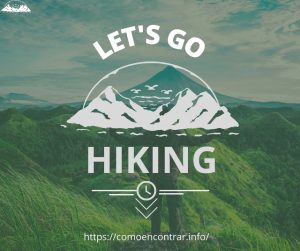
What are the essentials for hiking that I require for a multi-day excursion? What backpack and gear do I need for the day? What equipment is too overkill? What hiking equipment is required to ensure you’re ready for all weather conditions and other situations? What can I do to carry everything so that you don’t have to carry it all? It’s the ultimate question. Ultimate Hiking Essentials Checklist aims to address all these questions as well as many more to help you prepare for your next walk, multi-day hike, or outdoor adventure.
What to Pack For A Hiking:

It’s not a secret that trekking and trekking for long periods of time is among the top interests when it comes to travel. We’ve hiked across every continent from the highest point of Tanzania to the jungles of Colombia and in the past, we’ve gotten very adept in packing effectively and efficiently for all kinds of treks as well as weather. Our goal when finding the most suitable equipment and hiking gear is to be ready for a variety of weather conditions, and to pack light enough that we don’t have to carry lots of weight.
After receiving a lot of messages, emails, and queries inquiring about the best way to pack and prepare for these day and multi-day hikes, we came up with our hiking checklist of essentials, including our most-loved gear and suggestions for hiking, both shorter and long.
In the context of this In the beginning six years of our travels, we carried everything was needed in our backpacks , so that we could be ready for all kinds of weather or sport from the beach to the glaciers. In the end we made some foolish decisions back in the early days. In the end, we carried around a handful of bits of equipment we never utilized.
However, through our experience and experiments and around dozen multi-day hikes across all kinds of altitudes and weather conditions We learned to be more efficient and more efficient with our packing for hiking trips. This doesn’t just pertain to the hiking equipment we should bring along and when it was logical to hire gear locally during length of hike or even purchase the equipment at the market.
We also came up with a way to accomplish all this under a budget.
What’s the distinction between trekking and hiking?
Good question. Although this article does a great job at breaking it into smaller pieces for us, here , we’ll use the two terms in a way to refer to walking out in the natural environment for a certain amount of time. This differs from mountaineering, which usually requires specific climbing gear as well as technical abilities, as well as backpacking that typically includes camping gear.
Hiking Gear: Don’t Make The Same Mistakes as many of us make
We’ve made plenty of mistakes when it comes to backpacking gear and hiking gear over the decades. Here are a few of the most common myths about trekking gear that we’ve learned in the process.
1. It is essential to purchase the latest and most advanced hiking equipment.
There is no doubt that certain technologies for trekking clothing are particularly beneficial for wind resistance, lightness and waterproofing, as well as wicking (GoreTex and the fleece Polartec as well. are some that come to mind). But, we recommend that you focus on the hiking gear most essentials: clothing that’s lightweight, comfortable, breathable easy to layer.
There’s no climbing the top of Mount Everest here. (If you’re planning to it’s for another piece of writing). To give you a different perspective, watching people whizz through you in flip-flops could make all that fancy equipment for hiking seem unnecessary.
There’s no reason to spend too much on. Choose a good product so you’ll be able to use it for long however, avoid the shiny cutting-edge hiking gear. I know it’s difficult. Outdoor stores are dangerous shopping vortexes for us, too.
2. It is essential to take everything to take.
In almost every multi-day hike we’ve been on, we’ve had plenty of opportunities to purchase or rent gear to add to our hiking gear. It’s not practical to carry bulky sleeping bags in backpacks when they’re only needed for just a portion of the time on the course of a trip.
Do your homework and find out what’s available on the ground , and at what price. Contact the tour operator that you’re with, or talk to others who have been on similar hikes. Once you’re at the bottom, look for the best deal to rent, or perhaps purchase something brand new or used.
Prior to climbing Mount Kilimanjaro, we’d traveled through Bali, Malaysia, Bangladesh, Jordan and Thailand -using the same backpacks all over the world.
This was certainly more than worth the money I spent on Moshi, Tanzania to rent sleeping bags with waterproof pants, the waterproof cover, a walking stick gaiters and much more to get myself to the top of Mount Kilimanjaro. Dan even got a pair of hiking boots for just $15, which provided some in terms of stability and support for the ankle than those that he was wearing.
As we left to go on the safari right following the Kilimanjaro trek, I was able to take all the gear off at the shop for trekking gear and carry on with my usual light backpack.
3. Real trekking requires camping.
It’s completely subjective. It is true that camping and carrying your entire equipment can provide you with a greater feeling of accomplishment and independence and enable you to go further into nature. But, we disagree with the notion that camping is a better hiking experience.
In reality the most memorable treks (e.g., Annapurna Circuit, Markha Valley Trek, Svaneti, Peaks of the Balkans, Kalaw to Inle Lake in Burma, etc.).) are memorable because of the local cultural as well as the human interactions that are a part of our eating and sleeping arrangements with the local families.
It’s the experience of people and nature (and our human nature which reacts to the environment around us) that we consider to be deeply nourishing for the soul.

Leave a Reply